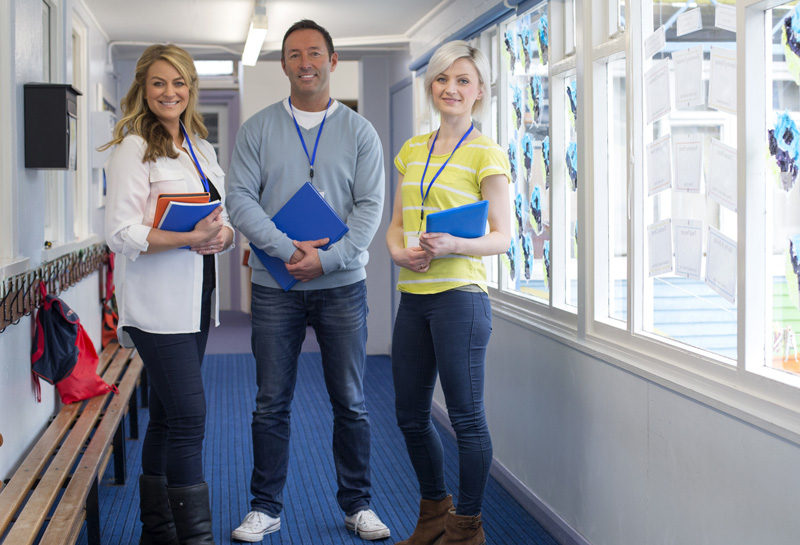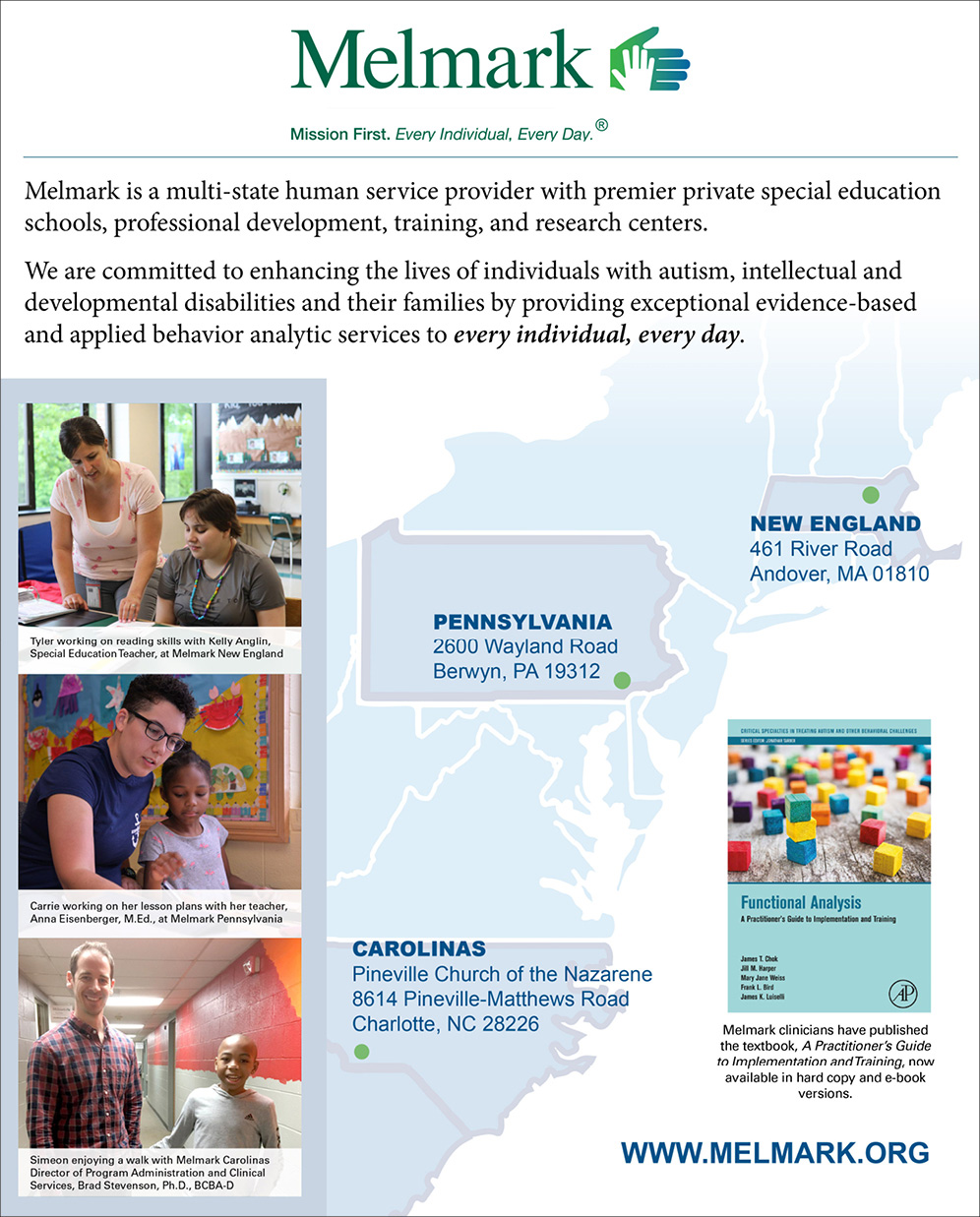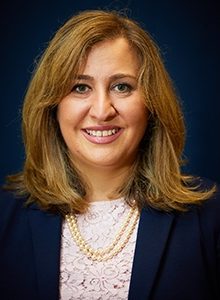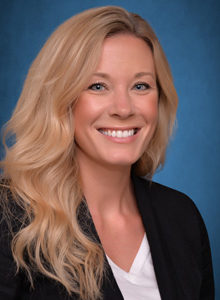Many students with autism require a multitude of services to aid in their success and independence within the school, home, and community environments. These services may include, but are not limited to, general and/or special education instruction, speech and language services, occupational therapy, physical therapy, social skills training, clinical programming (i.e., services), and a multitude of other individualized services. Whenever more than one person is responsible for client programming, collaboration is necessary to best meet the needs of the client, and to ensure continuity of care across settings, contexts, and caregiver. There are, however, multiple different types of collaboration that are widely used to meet this goal.

Who is Part of the Team?
Members of IEP teams can vary from student to student. Some IEP team members are required, regardless of the student’s disability, placement, or services provided. Required IEP team members include the parent/guardian of the child, a regular education teacher, a special education teacher, a representative of the local education agency, someone to interpret evaluation results, any necessary related service providers, and, when appropriate, the child. Related service members can include a range of specialist, but most common are an Occupational Therapist, Physical Therapist, Speech/Language Therapist, Board Certified Behavior Analyst (BCBA).
Occupational Therapists address activities that the student is required to perform daily and try to minimize the effects that occupational and performance concerns have on the completion of those activities (AOTA, 2010; Case-Smith and Arbesman 2008). Physical Therapists work to increase students’ motor development and skills. They support health promotion, obesity management, differentiate programs for individual learners, ensuring safe and appropriate educational environments, and community education (APTA, 2022). Speech Language therapists focus their efforts on improving student’s communication skills (Koenig and Gerenser 2006). Increasing students’ social skills and communication will increase a student’s quality of life and social acceptance (ASHA, 2015). Finally, BCBAs use interventions derived from the science of behavior change to affect socially significant behavior change in students who may present with a range of behavioral challenges. Strategies may focus on functional communication training, function-based interventions, and differential reinforcement (Cooper et al., 2007; Donaldson and Stahmer, 2014).
While many common team members have been discussed here, it is also important to note that for an Individualized Education Program (IEP) to be truly comprehensive, additional team members may be necessary in the collaboration process (e.g., orientation and mobility, supports coordination, school psychology, advocates).
Some Models to Consider
Pull-out service delivery is when a content area expert removes a child from large group or general education instruction to deliver individualized one on one or small group instruction in that particular content area (e.g., reading support, occupational therapy, speech therapy). Typically, these content specialists will communicate treatment plans with the other IEP team members, but assessments and treatment are provided without necessarily collaborating with other disciplines. While pull-out groups can be part of a comprehensive approach to continuous programming for students, it is typically not the sole intervention strategy for students with special needs (Mursky, 2011).
Consultation is an expert-driven model in which team members seek advice from someone with extensive knowledge of a particular subject (Bock, 2011; Zimmerman, 2011). It is important that the consultant does not dominate conversations but that the team works cooperatively towards a common goal (School Psychologist Files, 2022). For instance, an IEP team may seek consultation from a BCBA when a student starts to engage in a new challenging behavior. Although the BCBA would be the expert in assessment of and interventions for said challenging behaviors, input from other team members is still crucial to the development of a program (e.g., speech and language pathologist’s input on teaching strategies for a communication response suggested by the BCBA). Respect for each person and their assigned role in the group is another essential trait of effective consultation. Consultation allows each expert to complement each other to provide evidence-based, effective treatment to individuals requiring a multitude of services.
Interdisciplinary collaboration is a comprehensive and holistic approach to addressing a student’s needs (Boivin, 2015). Typically, this involves experts from different disciplines or skill areas coming together to discuss the needs of a student, and to engage in shared decision making to create a comprehensive plan that addresses the student’s specific needs. Unlike a pull-out or consultative model, interdisciplinary collaboration does not involve unilateral decision making, or “siloed” decision making, from any one team member. In order for interdisciplinary collaboration to be successful, there should be a foundational understanding of one another’s roles, as well as the scope and boundaries of each member’s skill set (Boivin, 2015). An understanding of the interplay or carryover effects from one setting or situation to another across disciplines should also be discussed during interdisciplinary collaboration. Finally, to be most successful, collaboration should span from admission to discharge, and be utilized across all facets of an individual’s educational plan.
Key Ingredients for Successful Collaboration
Ultimately, there is no one “right” way to collaborate for students with autism or other special needs. There are, however, a few key ingredients when determining when and how to collaborate with other disciplines for your student:
- Provide rationale for decision making (Boivin, 2015).
- Understand one another’s roles, as well as the scope and boundaries of each member’s skill set (Boivin, 2015).
- Be aware of decision making across disciplines and how treatments may interact across disciplines for an individual (Newhouse-Oisten, 2017).
- Consistently meet to evaluate assessments, treatment plans, student progress, and need for treatment plan changes for your student
Keri Bethune, PhD, BCBA-D, is the Director of Educational Services at Melmark Carolinas. Sharon Onda, MEd., BCBA, is the Co-Director of Educational Services at Melmark Pennsylvania. Silva Orchanian, Med, BCBA, LABA is the Senior Director of Day Services at Melmark New England. Erin Way, MS BCBA, is the Co-Director of Educational Services at Melmark Pennsylvania.
References
Boivin, N.E., Blevins, H., Norton, V., Pierce, C., Stone., A., Weiss, M.J., & Whelan, C. (2015). Characteristics of interdisciplinary practice. Southeast Education Network (Winter 2015/2016), 106-108.
Book, S.J., Michalak, N., & Brownlee, S. (2011). Collaboration and consultation: The first steps. In Simpson, C.G., & Bakken, J.P. (Eds), Collaboration: A multidisciplinary approach to educating student with disabilities (pp 3-15). Waco, Texas: Prufrock Press, Inc.
Mursky, C. (2011) Pull-out/Pull-in Methods. Wisconsin Department of Public Instruction.
Newhouse-Oisten, M.K., Peck, K.M., Conway, A.A., & Frieder, J.E. (2017). Ethical considerations for interdisciplinary collaboration with prescribing professionals. The Behavior Analysis in Practice, 10(2), 145-153.
School Psychologist Files. (2022). Consultation. https://schoolpsychologistfiles.com/consultation/
Zimmerman, H. (2011). Collaborative Consultation. Inclusion in the Secondary Classroom. Collaborative Consultation – Inclusion in the Secondary Classroom (google.com).








